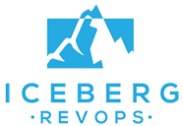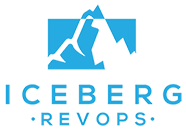Few stores have been as carefully designed as the Apple Store.
When you walk into one you’re immediately drawn to the products that are propped up for display on long beechwood tables.
There’s no barrier between you and the products. You can start playing with the latest range of MacBooks, iPads, and iPhones immediately. Diving right into the features and apps that interest you the most.
Now imagine the opposite of the Apple Store experience.
Imagine all those amazing products being locked away out of sight or being trapped behind a glass case so you never gain an appreciation for the razor-sharp quality of the iPhone’s camera, or how sensitive the MacBook Pro’s keyboard is.
Imagine that you had to call a sales assistant over and go through a lengthy process of discussing your needs, specifications, give most of the same information to another sales assistant, and set up various meetings before you could even hold an iPhone.
What scenario would you prefer?
The Apple Store experience parallels one of the most fundamental aspects of Product-Led Growth that’s shaping B2B customer acquisition: allowing users to interact freely with your product without having to go through Sales.
This shift is not only better adapted to savvier prospects who prefer to self-educate and try products before committing to a purchase, but it’s partly responsible for the growth of some of the biggest SaaS unicorns of the past decade.
(Think Slack, Dropbox, ClickUp.)
But is PLG replacing Sales teams?
Absolutely not. Even the Apple Store needs great sales reps to help customers make the right purchases, but how your team will sell definitely changes under PLG.
Primer: What is PLG?
PLG is a Go-To-Market (GTM) strategy where the product is the main source of acquisition, growth, and user retention. PLG companies rely heavily on data that shows them how a user is interacting with their product to find upsell and contract expansion opportunities. It’s easy for users to either upgrade their accounts and/or add more seats without intervention from a Sales team.
Product data is then used to enable a variety of sales strategies – from selling more quickly to small businesses all the way up to consolidating usage across large enterprises into companywide subscriptions.
How is Product-Led Growth Changing B2B Sales?
If you’re used to sales-led growth there can be quite a few hurdles to overcome when transitioning to PLG. We’ve picked out 4 of the biggest changes PLG is bringing to B2B Sales and how to adapt to them.
Product-led sales (PLS): Modifying your sales funnel
Embracing PLG means you need to rethink your funnel, customer lifecycle, and their associated metrics. In Sales-Led Growth a prospect enters your funnel through outbound Sales or Marketing. In PLG, however, a prospect typically enters your funnel via the product itself.
Users will enter a self-service funnel by either signing up for a free trial of your product or using a freemium version of it. Nailing your onboarding process here is crucial as first-time interactions with your product are no longer filtered through Sales. You need to make sure you’re investing in improving that onboarding process so users find value in the product as quickly as possible. How “value” is defined depends from company to company, it can be getting an e-signature, completing a transaction, or onboarding a new hire.
Product-Led Sales (PLS) is then layered on top (remember when we said Sales is still important for PLG?). By leveraging product data, Sales are able to focus their outreach efforts on users most likely to benefit from interacting with sales (this usually involves consolidating individual user accounts into a larger company account).
The easiest way to think of this customer lifecycle is a self-serve funnel where a subset of accounts are routed to the sales team for additional attention..
The Self-Serve Funnel
- User signs up for a free trial or freemium account
- User unlocks initial value from product
- User upgrades to a paid account
- User adds more seats/users without intervention from sales
Sales-Driven Expansion
- Users are scored on a variety of attributes, including in-app behaviors (e.g. confirmed email address, added a seat, number of sessions, etc.)
- Sales reach out to customers who have reached a certain lead scoring threshold and have buying potential
- Deal won and attributed to a sales-assisted motion
It’s important to note that not all PLG companies follow this exact formula, and even within the same company there may be variation on how opportunities enter your funnel and how Sales expand contracts. Having said that, this type of customer lifecycle is typical for a PLG company.
Significant Changes in Your Funnel Metrics
In a traditional sales-led funnel, Marketing and Sales teams use data from inbound and/or outbound efforts to respond to and nurture leads. In PLG, product usage data should be the main factor for how Marketing and Sales support revenue growth.
But how data is used to support growth varies between companies. While the Sales team in most PLG companies will reach out to users who have crossed a certain lead scoring threshold, we’ve seen companies have great success by targeting those least likely to purchase.
The idea here is that those users who are clearly getting value from the product are most likely to self-serve, while others who are a good fit, but not engaged, might benefit most from Sales intervention.
It’s beyond the scope of this article to go deep into all the most important PLG growth metrics, so we’ll focus on some of the big hitters and how to apply them to your own funnel. Note that there isn’t any one-size-fits all definition of these metrics and defining these so they’re relevant to your company is an important part in successfully leveraging product data to enable Sales, Marketing, and Customer Experience.
Product Qualified Lead (PQL)
A PQL is usually a user who has engaged with your product in numerous ways, experienced value from it, and their in-app behavior mirrors that of users who converted to a paid account.
To define the perfect PQL threshold for your company you first need to analyze your data to find out what actions users took before becoming paid users and identify the trends. There are far too many variables to make this a simple task which is why many PLS teams choose to partner with a vendor who can comb through all your data to give you a reliable scoring system.

“When I first started at DocSend, I spoke with people across Product, Sales, and Marketing to understand how everyone thought about which leads were most likely to convert. Most of the opinions overlapped. Had I distilled what I learned into a lead score, it would have worked ok. But I would have missed a few big opportunities.
I found this out when we brought in MadKudu as a lead scoring vendor. The first step in their process was to run a historical analysis on years’ worth of leads to find out which people are most likely to buy from sales. They used all of our data (behavioral data from our product, CRM data, etc.) along with over 100 additional data points they pulled in from various external sources (company revenue, tech stack, size, and more).
There were a handful of interesting lessons nobody expected. The one that always stuck out to me was that companies that use Outlook for email were nearly 2x as likely to buy from our sales team as companies that used Google.”
Taft Love
Founder, Iceberg Ops
Product Qualified Account (PQA)
A PQA identifies companies that are most likely to benefit from a centralized company account, which usually means more features and higher cost per user. Again, product data based on in-app actions is key to making this definition (though non-behavioral attributes should be included as well to weed out highly engaged but low potential value companies).
The definition may represent usage level, breadth of feature usage, the velocity of usage (i.e. big influx of new users), and behavior components.
When to Keep the Marketing Qualified Lead (MQL)
You might think that PQLs and PQAs make the traditional MQL redundant, but that’s not the case for all companies.
Some PLG Sales teams also get leads from the marketing team. For example, the primary call to action on DocSend’s homepage is the PLG-friendly ‘Start a Trial.’ However, prospects can also request a demo or start a chat. In both cases, the prospect would become an MQL and not a PQL.
Understanding what product signals matter and operationalizing that data (e.g. using it in a scoring model and automations) is at the heart of any successful PLG motion. Unfortunately the majority of PLG companies don’t effectively track the right metrics and overwhelm their teams with so many metrics that it’s hard to zoom out and see the bigger picture.
Investing in RevOps early on avoids this. You not only need the technical experts who can make sure your data is reliable, but strategic guidance on how to make decisions with that data to increase pipeline and improve your team’s efficiency.
If you’re not sure how investing in a RevOps team can help, check out these case studies.
The Growth of Bottom-Up Sales: are top-down sales dead?

“PLG does not mean “no salespeople”. In fact, the best reps at Figma, Loom, Zoom, etc. are very excited about PLG because it means that they get to have conversations with people at companies who are already very familiar with their product.”
Brendan Short
CEO & Co-Founder at Groundswell
Another way PLG is shaping B2B sales is who they’re targeting and what “direction” their sales efforts are taking.
Most traditional sales-led companies prefer a top-down sales motion, whereas product-led businesses typically favor a bottom-up approach.
Here’s a breakdown of what each approach looks like:
Top-down sales: SDRs target decision-makers in a company. They sell directly to executives who then onboard their teams to the new software.
Bottom-up sales: front-line employees are able to trial the product directly and upgrade. They then add their team members and product usage spreads upwards throughout the company.
A bottom-up sales approach lowers the barrier to entry for many SaaS companies to kickstart product adoption within an organization; it’s a lot easier to sell a $50/month subscription to a single user than negotiate a $40k enterprise deal. It’s also much easier to sell to leadership later on when you can already show the positive impact a product is having on their team.
Bottom-up sales is also well adapted to the economic upheaval that’s been caused since the pandemic. With many companies tightening pursestrings, a bottom-up approach affords users a low-cost way of validating products before including them in their increasingly tight budgets.
However, it’s worth bearing in mind that bottom-up sales isn’t the right move for all companies.
Top-Down vs Bottom-Up Sales
| Top-Down | Bottom-Up |
| Software is complex and requires a lot of training and onboarding | Software is relatively simple to use and understand |
| Larger deals | Expand deal size rather than landing a big deal upfront |
| Targets decision makers at the top | Targets front-line employees |
| Pairs well with sales-led GTM strategy | Paris well with PLG GTM strategy |
| Long sales cycles | Quick sales cycles |
| Lower churn | Higher churn |
While a bottom-up approach pairs well with a PLG GTM strategy, that’s not to say top-down sales hasn’t got its place either.
“We started with PLG and over time added high touch/ top-down sales,” explains Ruben Gamez, founder of SignWell. “Sometimes it’s the best way to increase the mid market/enterprise segment. Product Led Sales happens too, so it’s often a mix and it all works together to build brand by acquisition.”
Increased Sales Team Efficiency
How much of your Sales team’s time is spent on selling?
It’s probably as little as 2 hrs 24 mins per day.
The rest of the time is spent on a myriad of non-selling activities (most of which can be automated) like prioritizing leads/opportunities, researching prospects, generating quotes and gaining approvals, manually entering customer data into CRMs, etc.

While PLG won’t fix all of these problems, it does help Sales teams focus their efforts on targeting accounts with the highest revenue potential by leveraging the right product data.
Thought experiment: if you were to prioritize these two leads for Slack’s Sales team, who would you choose?
Person A: downloaded a white paper and left their information, searched for something on the Slack site, watched a webinar, and opened an email.
Person B: confirmed their email address after signing up for a free trial, signed in at least 3 times in the first week, sent 500 messages within 1 month, and added various team members.
If we were to bet who’s most likely to have the highest Annual Contract Value (ACV) it’s person B without question.
Leveraging product data means your Sales team is already talking to users who find value in your product, or they’re users who could benefit most from the human touch that Sales can provide. With the right product data your Sales team spends less time researching and shuffling through leads, wasting their time on poor-fit leads, and more time winning deals.
Is Your Company Ready for the PLG Tidal Wave?
Generally speaking, when we interact with a product we want the Apple Store experience: it’s frictionless, it’s intuitive, and we’re able to experience the value of the product on our own terms.
But we still need a great sales rep to come over and help us make a smart purchasing decision.
That’s why adding a sales motion on top of an existing product-led strategy may offer the best of both the sales-led and product-led worlds. The product shoulders the burden of nurturing leads while sales works opportunities with high revenue potential.
But you need to make sure your sales team is fed the right data and their day-to-day isn’t dominated by tasks that can be automated.
If you’re ready to automate as many actions as possible for your sales reps, operationalize your product data, and build your growth stack, we’re here to future-proof your company.
Keep Reading
Leveling Up: Designing a Customer-Focused Sales Strategy for Next-Stage Growth
In the span of the last two decades, the dynamic between sellers and buyers has experienced a seismic shift. Initially, sales were all about the product, with a spotlight firmly trained on its many features and benefits.
Continue Reading Leveling Up: Designing a Customer-Focused Sales Strategy for Next-Stage Growth
The RevOps-Approved Product-Led Growth Stack
What you really need to create a lean, effective product-led growth stack. Approved by RevOps specialists.
Continue Reading The RevOps-Approved Product-Led Growth Stack
Hit Turbo on Your PLG Sales Motion: a 4-Point Action Plan
The magic of a product-led sales strategy happens at the top of the funnel. Have meaningful conversations earlier in the sales cycle with this plan.
Continue Reading Hit Turbo on Your PLG Sales Motion: a 4-Point Action Plan
The Benefits of PLG: why more B2B Companies are embracing it
Lower CAC, better churn prediction models, a more efficient sales team….the benefits of PLG for B2B are hard to ignore, but is your company ready?
Continue Reading The Benefits of PLG: why more B2B Companies are embracing it






